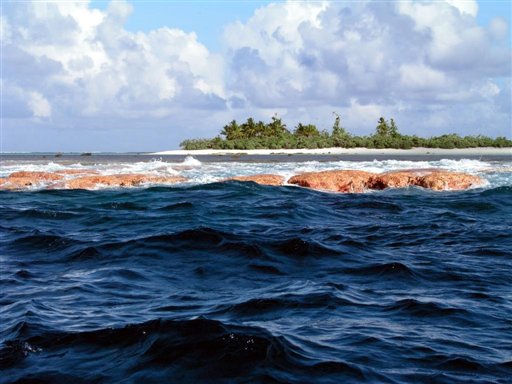UNITED NATIONS (AP) — President Barack Obama is carving out a wide swath the Pacific Ocean for an expanded marine preserve, putting the waters off-limits to drilling and most fishing in a bid to protect fragile underwater life.
The revamped expanded Pacific Remote Islands Marine National Monument will cover 490,000 square miles – an area roughly three times the size of California – and will become the largest marine preserve in the world. Millions of seabirds, sea turtles and marine mammals live in the bio-rich expanse included by the new monument, which will also add new protections for more than 130 “seamounts” – underwater mountains where rare or undiscovered species are frequently found.
The move to broaden the George W. Bush-era preserve comes as Obama seeks to show concrete presidential action to protect the environment, despite firm opposition in Congress to new environmental legislation. At the United Nations this week, Obama announced new U.S. commitments to help other nations deal with the effects of climate change, as world leaders seek to galvanize support for a major global climate treaty to be finalized next year in Paris.
“We hope the steps taken today by the U.S. government will accelerate similar actions by a growing list of coastal nations to protect more of the world’s great ocean treasures,” said Matt Rand, who heads the ocean program at the Pew Charitable Trusts.
Obama will sign a memorandum expanding the ocean preserve on Thursday, the White House said. Secretary of State John Kerry was also to discuss the announcement during an event Thursday on ocean sustainability in New York.
The president signaled his intent to expand the monument in June and asked for input on the final boundaries from fishermen, lawmakers and scientists. Officials said they received more than 170,000 electronic comments on the proposal.
The memorandum bans commercial fishing, deep-sea mining and other extraction of underwater resources, by recreational fishing will continue to be allowed. White House officials said they decided to allow some fishing in an attempt to preserve and encourage the public’s access to federal areas.
While a major symbolic victory for environmentalists, who long urged Obama to take this step, the designation will have limited practical implications. That’s because little fishing or drilling are taking place in the region even without the new protections.
The expansion also falls far short of what Obama could have done had he used the full extent of his powers.
Maritime law gives the U.S. control up to 200 nautical miles from the coast. Under Bush, the U.S. set aside waters extending about 50 miles from the shore of an array of U.S.-administered islands in the south-central Pacific, thousands of miles from the American mainland.
The islands sit between Hawaii and American Samoa and are divided into five regions. Obama is extending the preserve to the full 200 miles – but only for three of the five regions.
Had Obama expanded the preserve in all five regions, he could have protected more than 780,000 square miles, according to a geographic analysis by Pew.
___
AP Science Writer Seth Borenstein contributed to this report.
___
Reach Josh Lederman at http://twitter.com/joshledermanAP

COMMENTS
Please let us know if you're having issues with commenting.